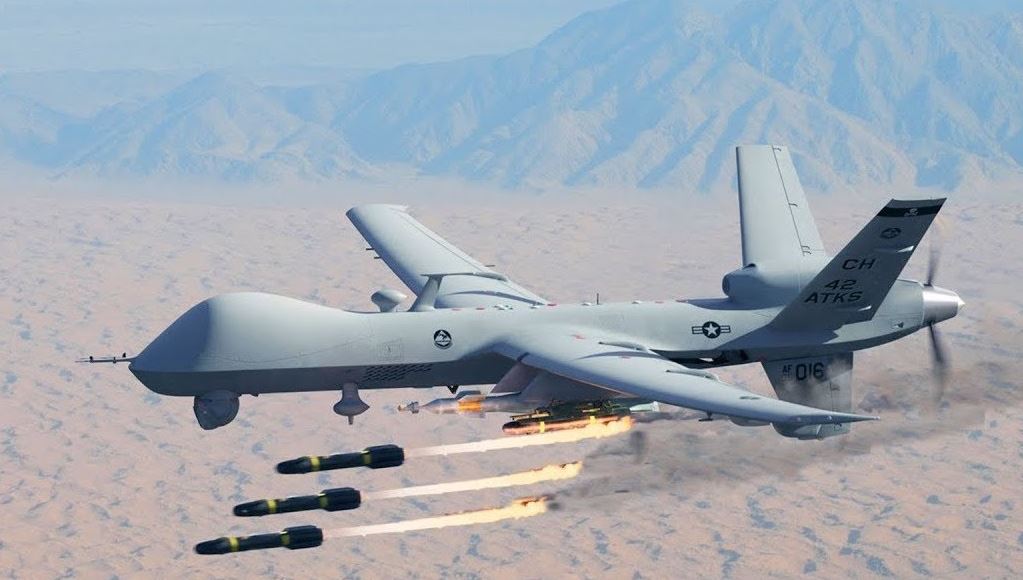New Delhi: Defence deals signed between India-US during Prime Minister Narendra Modi’s US visit not only enhance India’s defence capabilities but also show growing proximity between the two countries, experts said Friday.
India-US inked a $3 billion deal for 31 High Altitude Long Endurance (HALE) UAVs, of which the Navy will get 15 SeaGuardian drones. While the Army and the Indian Air Force (IAF) will get eight each of the land version – SkyGuardian.
Another major announcement that came was an MoU signed between GE and Hindustan Aeronautics Limited (HAL) to jointly produce fighter jet engines for the Indian Air Force.
Former Deputy National Security Advisor Pankaj Saran called it a “new era” in India-US relationships.
“This marks a new era in relationships. The key takeaway is the focus on two sectors – defence and technology. The third element is the boldness of ambition shown by both sides,” Saran told PTI.
“In the past also we have had summits, but in this particular summit there is a very conscious decision for both sides to significantly increase their ties in strategic areas,” he said.
Former Vice Chief of Indian Air Force Air Marshal Ravi Kant Sharma (retired) said the MoU signed between GE and HAL is a great step forward for India and its jet engine programme.
“It will provide a boost in making India move towards self reliance in jet engine technology, though there will be a long road ahead before we produce an engine. The F414 is a contemporary, state-of-the-art engine… While we do not know the fine prints, this MoU will definitely help in moving towards indigenous jet engines,” Sharma said.
Talking about the deal for the Unmanned Aerial Vehicles (UAV), he said, “These UAVs can sustain for long duration, fly at high altitude, and have encrypted communication. In any warfare, you need intelligence, surveillance and reconnaissance… It will provide good ISR capabilities.”
The Indian Navy has already been operating two Reaper drones which were hired on lease from an American firm.
Former Navy Spokesperson Captain DK Sharma (retired) said the drones provide a huge advantage, especially as India has been watching its maritime boundaries with the ramping up of Chinese activities in the Indian Ocean area.
“These drones are an asset which has not been shared anywhere in the world, India is probably the first country to get the MQ9B, they had earlier given us two MQ9 Reapers on ‘Company Owned, Company Operated’ model,” the retired navy spokesperson told PTI.
“The two UAVs have already flown around 12,000 hours and they have changed the way surveillance is done, data is collected and a maritime domain awareness picture is created. It was very well appreciated,” he said.
“Our area of responsibility – from Africa in the west to Sunda Strait in the east, and in the south, is huge. Last few years we have also seen a lot of Chinese presence in the area on one pretext or the other. We wanted some advanced surveillance assets which are not very costly to operate. One hour of a sortie of a Reaper costs in thousands (of Rupees), when the same job is done by the P8-I, the cost comes to a few lakhs,” he said.
“It has hard points, can be weaponized, can go on a pure ISR mission, or anti-submarine warfare mission, and can be armed with hellfire missiles or other weapons. It can do the job as the mission requires,” he added.
The Predators, also called the MQ-9 Reaper, can fly up to 36 hours at a stretch and can be used for focused monitoring of any specific point or area of interest.
Other major outcomes of PM Modi’s state visit to the US includes computer storage chip maker Micron’s announcement to set up a semiconductor assembly and test plant in Gujarat, and the decision by India-US to send an Indian astronaut to the International Space Station in 2024.
India has also decided to join the Artemis Accords, which brings like-minded countries together on civil space exploration, and NASA and ISRO have agreed to a joint mission to the International Space Station in 2024.
PTI
